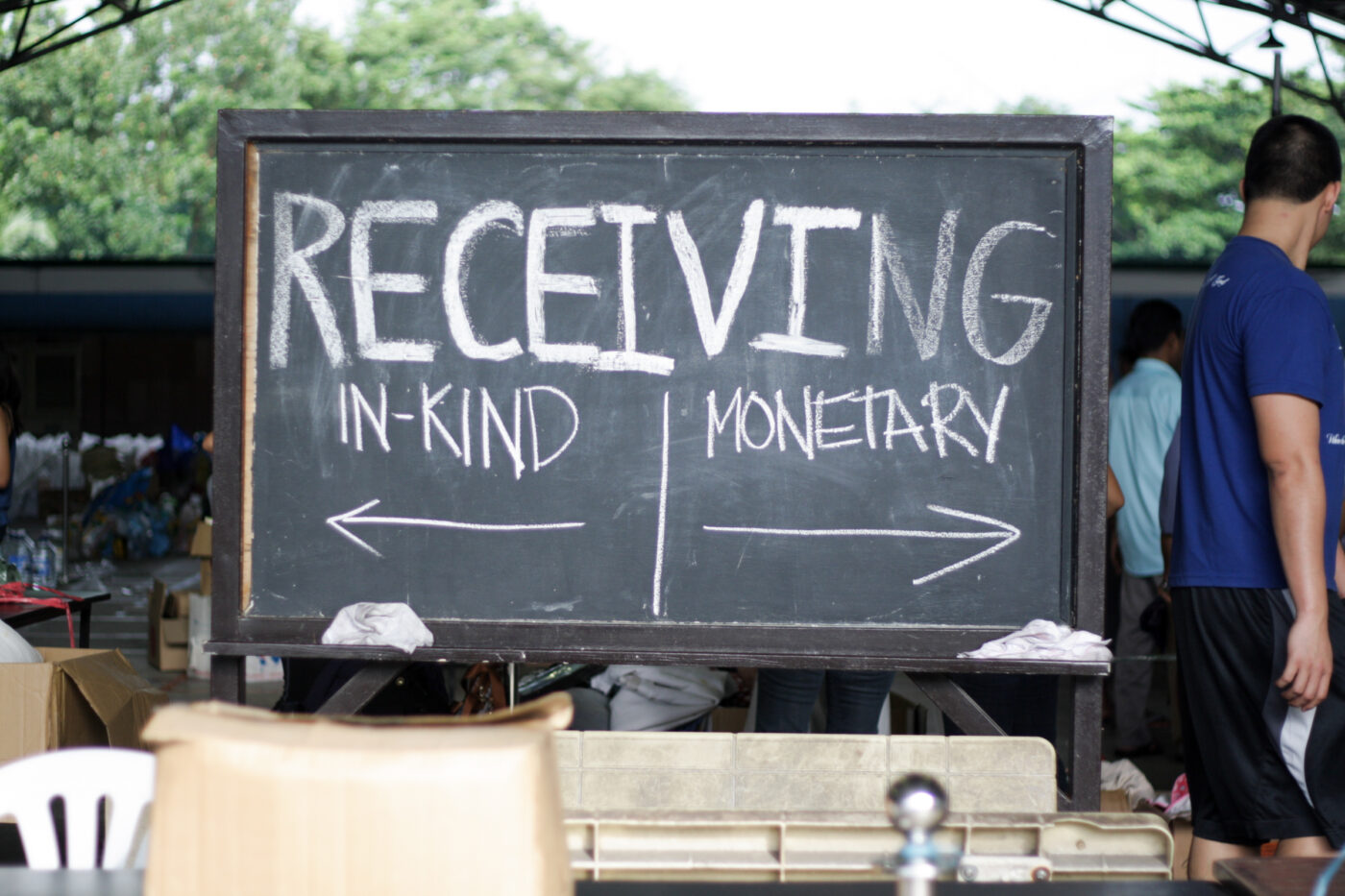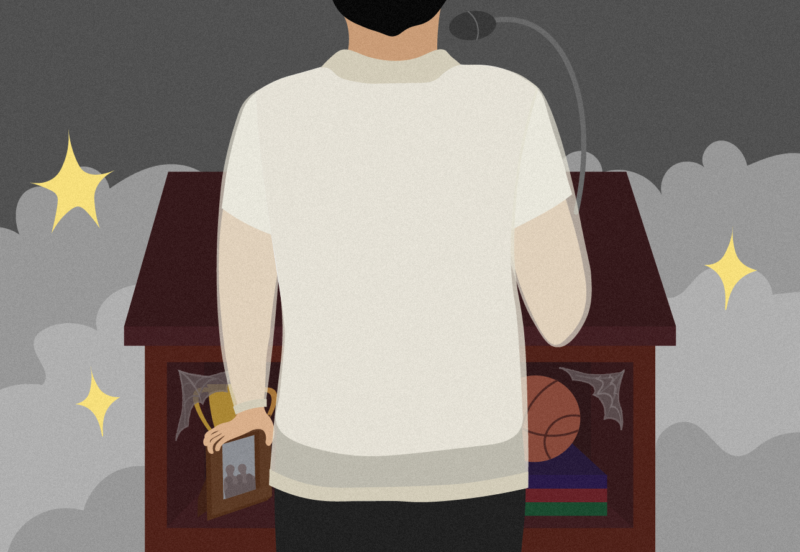The Ateneo’s vision is to form “men and women for others.” Rooted in moral theology, the notion of “love thy neighbor” is interpreted through the works of corporal mercy: Feed the hungry, shelter the homeless, clothe the naked, among others. These works constitute charity—works that address such practical needs like food, housing, health care, and education.
In this sense, charity can be easily interpreted as a moral responsibility to others. Many do see it this way—that giving is the duty of the financially able only because they are financially able. There is more to charity than cash and kind donations, though.
Sustainability is another issue—a common one, in fact. Donor fatigue is always a concern, but more so is the problem of whether the fulfillment of our so-called moral responsibility begins and ends with donation giving. Tangible change in the lives of those in the margins should be an important factor of a charity’s success, not just the number of its beneficiaries.
This opens up some questions on the decisions the Ateneo makes when engaging in charitable endeavors, especially as the value of charity is something it wishes to impart to its students.
The seeds of change
In the Philippines, charity remains a very relevant activity. Every year, the Philippine Statistics Authority conducts the Annual Poverty Indicators Survey (APIS). The most recently published APIS showed that at the first semester of 2013, the Philippine poverty incidence among Filipinos was 24.9%. This percentage of Filipinos could not afford to sustain themselves on their income and does not include the number of low-middle income Filipinos who are vulnerable to sudden inclement weather and job market fluctuations.
To answer these needs, the state has tried to create jobs and subsidize public education and hospitals, among others. Despite this, poverty incidence has remained steady over the last few decades, as reported by Social Weather Station. Charity operations became another avenue of helping the poor, usually in the form of donations being sent directly to the concerned people.
“Charitable dole-outs tend to address immediate needs and therefore afford some upliftment by way of affording immediate social protection and redress of certain shocks, be they health, education or livelihood-related,” says Atty. Jaime Hofileña, vice president for Social Development. This makes sense as charities usually have the strongest pull on donors immediately after calamities or tragedies.
These were also the findings of Chingching Chang from National Chengchi University. The study, published on August 8, 2014 in Routledge’s Journal of Advertising, showed that “egoistic appeals encouraged larger donations when participants read highly guilt-arousing magazine stories and experienced greater guilt appraisals.” In other words, people respond more to a need for charity than they do to its success. This may be because seeing suffering creates an urgent need to act to alleviate it; seeing another person happy does not inspire such an urge.
This may be one aspect of why the Ateneo contributes strongly to calamity relief. Hofileña says that, in times of natural disaster, the Disaster Response and Management Team marshals resources—mostly from donors—to give humanitarian assistance to the affected communities.
Deep in the roots
The school does not have a permanent charity arm, though. This means that the school does not have a foundation that continually gives dole outs alone, but contributes aid using other means.
“If, by ‘major charitable organizations and affiliations,’ you mean that the University channels its own funds [or] other resources to external organizations by way of making such resources available for use by others without expectation of return, Ateneo does not have such,” Hofileña explains.
Perhaps then, the Ateneo views donation-based charities alone as insufficient for the goal of reducing poverty and marginalization. When there are no donors, charities do not have the resources to alleviate even the present needs of individuals.
This is where alternatives come into play. Rather than react to only the effects of structural problems, such as sending a welfare check to a man recently out of a job, there must be other charitable endeavors that address the problems at large, such as the lack of overall competition in the business sector that may have caused the same man to lose his job.
According to Ashfaq Khan, PhD, the poor need to make a sustainable living for themselves in order to leave poverty. In his study “Tackling the failure of microfinance efforts through amalgamating microfinance with charity: two viable alternatives in the context of Pakistan,” he noted that microfinance arose as a response to this need. “The traditional mainstream financial institutions were not willing to serve this segment of the society, nor did they command the necessary resources to meet the special financial requirements of the poor,” he said. He added that people would turn to informal financial systems, which would then exploit them with high interest rates, leaving them in more debt than before. This has parallels in the Philippine context.
In targeting the smallest units of a country, the family, microfinance institutions (MFIs) ideally create a spillover into the community at large. Poor parents who have income can send their children to school and avail of health care. Their children then become educated and have better qualifications and can land better jobs, which lead to higher income and more purchasing power. They can then be taxed both from income and expenditures. With this tax income, the state can invest in more projects to address poverty.
Branches intertwined
Khan noticed an unfortunate trend among MFIs, however. “The analysis of this situation reveals that there is a contradiction between the ultimate objectives of these institutions and those of the poor,” he said. In the situations in which the rate of return is low, MFIs cannot maintain their operations. Khan found that this led to their excluding the poorest of the poor from their operations by imposing large collaterals, which the poor cannot put up.
His study recommended that some hybrid of charity and MFIs be implemented, a system in which beneficiaries did not have to pay back the funds they received, like donation-based outfits. However, they should still be held accountable to how these were spent. For this, he suggested centralized operations with standardized background checks, policies, and training to produce productive revenue, similar to MFIs.
This model is what the Yellow Boat of Hope Foundation (YBoHF) has accomplished. Jay Jaboneta, co-founder of the YBoHF, does not classify the foundation as under either charity or MFI, instead saying that the foundation is more like a social enterprise.
YBoHF helps children who have to cross bodies of water to get to school and has recently expanded to helping fishermen as well through boat building. Unlike some other charity models, social enterprises believe that providing funds is only the beginning. He says, “Most of the beneficiaries also build their boats. We just buy the materials.”
“We found out the beneficiaries take more care of the boats since they built them in the first place,” he added. Having an active role in leaving the margins made the community more invested in their uplifting as well.
This approach is very similar to the capacity-building operations the Ateneo contributes. Hofileña says that instead of just donating, the Ateneo collaborates with other charitable organizations with which it has “common social advocacies.” In these affiliations, the Ateneo contributes not necessarily by raising funds, but by enabling the current and future beneficiaries of a program by enhancing its mechanisms and being able to develop them such that they are more effective in the long term.
An example would be scholarships, in which there is no expectation of return on financial investment; nonetheless, they enable students to address a basic need, education, which leads to greater returns for scholars in the future.
Coming to fruition
For the Ateneo, charity does not exist only in the most secular sense of the term, which is to give to the poor and the marginalized to uplift them from their situation. Rather, its theological roots remain ever-present. Associate Professor of Moral Theology Romeo Intengan, SJ explains charity “as a response to and an imitation of God’s absolutely generous love for us.”
Despite the imperfections of the different charitable models, Intengan believes that charities are still relevant. He makes the distinction between the individual and the society in terms of assigning praise or blame. On the individual level, a person’s action can clearly be evaluated as a cause, and assigning him responsibility for it becomes easier. On the other hand, the cause of societal problems cannot as easily be pinpointed. He says that as long as the charity implements effective projects and the bulk of their funds still address the target demographic, they cannot be completely blamed for inefficiency as some mechanisms that hinder them are out of their control.
Take, for instance, the earnings that MFIs and some social enterprises receive from charity. This could go to the organizations’ staff members, who are usually low-middle income and need to live in dignity as well. Intengan says, “People now can argue about the actual amounts, what is excessive and what is deficient and what is just right. That’s where the pluralism comes in.”
His point is that through these efforts, people are still able to experience the fullness of life, sustained only physically, but also psycho-spiritually—“basic welfare, liberty, equality, participation, solidarity and respect for the integrity of creation.”
This ties back to being men and women for others. Charity is concrete action; feeling pity is not enough. Because of the constant need for action, many view it as responsibility rather than liberating.
Intengan explains that charity is very grounded in scripture. “Sometimes we understand scripture from a modern, liberal and liberalistic viewpoint, whereas scripture context is very social, societal, very existential.” Charity, ultimately, is helping the poor to better the society as a whole—a society we are a part of.







